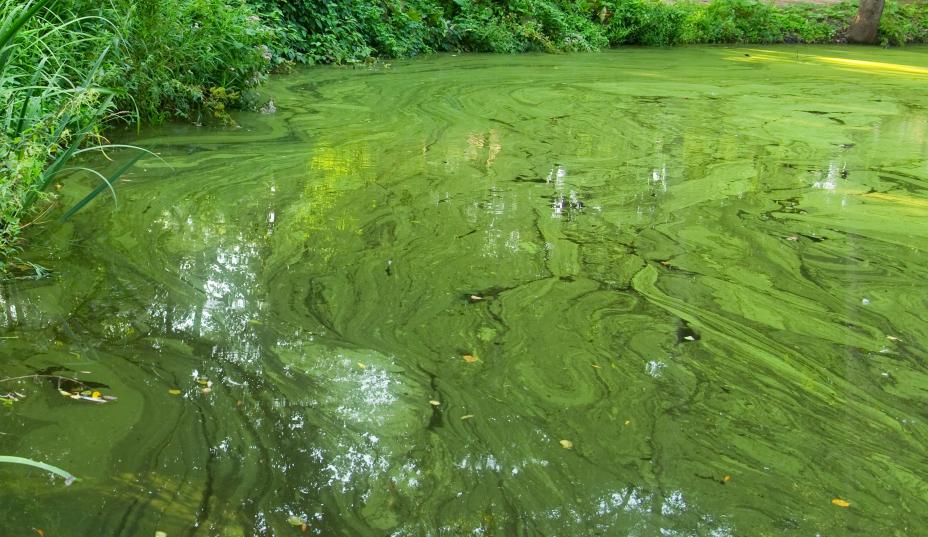Cyanotoxins
Why are blooms toxic? Can I swim in the water?
Both the type and the abundance (concentration; cells/mL) of the cyanobacteria matter when it comes to determining health risks to pets, humans, and ecosystems. Every pond has cyanobacteria, as they are normal members of an ecosystem. Some types of cyanobacteria produce harmful toxins when they bloom, and many do not.
The most common toxins produced by cyanobacteria include:
- microcystins
- anatoxins
- cylindrospremopsin
- saxitoxins
- β-N-methylamino-L-alanine (BMAA)
These toxins can pose a risk to human health, but only when they are present in high levels. If pond water is bright green or if there is any sign of a bloom it is recommended to avoid swimming and avoid eating seafood harvested from the pond until testing confirms toxin levels are safe. This applies to pets such as dogs, as they can be at risk from these toxins as well. Dogs are much more likely to ingest the water than humans, and ingestion can be much more dangerous than swimming or wading. Please keep pets away from blooms.
Cyanotoxins are not currently regulated by the federal government or by the state of Massachusetts, but the EPA and MA Department of Public Health has issued guidance for evaluating the presence of cyanobacteria and their toxins.

